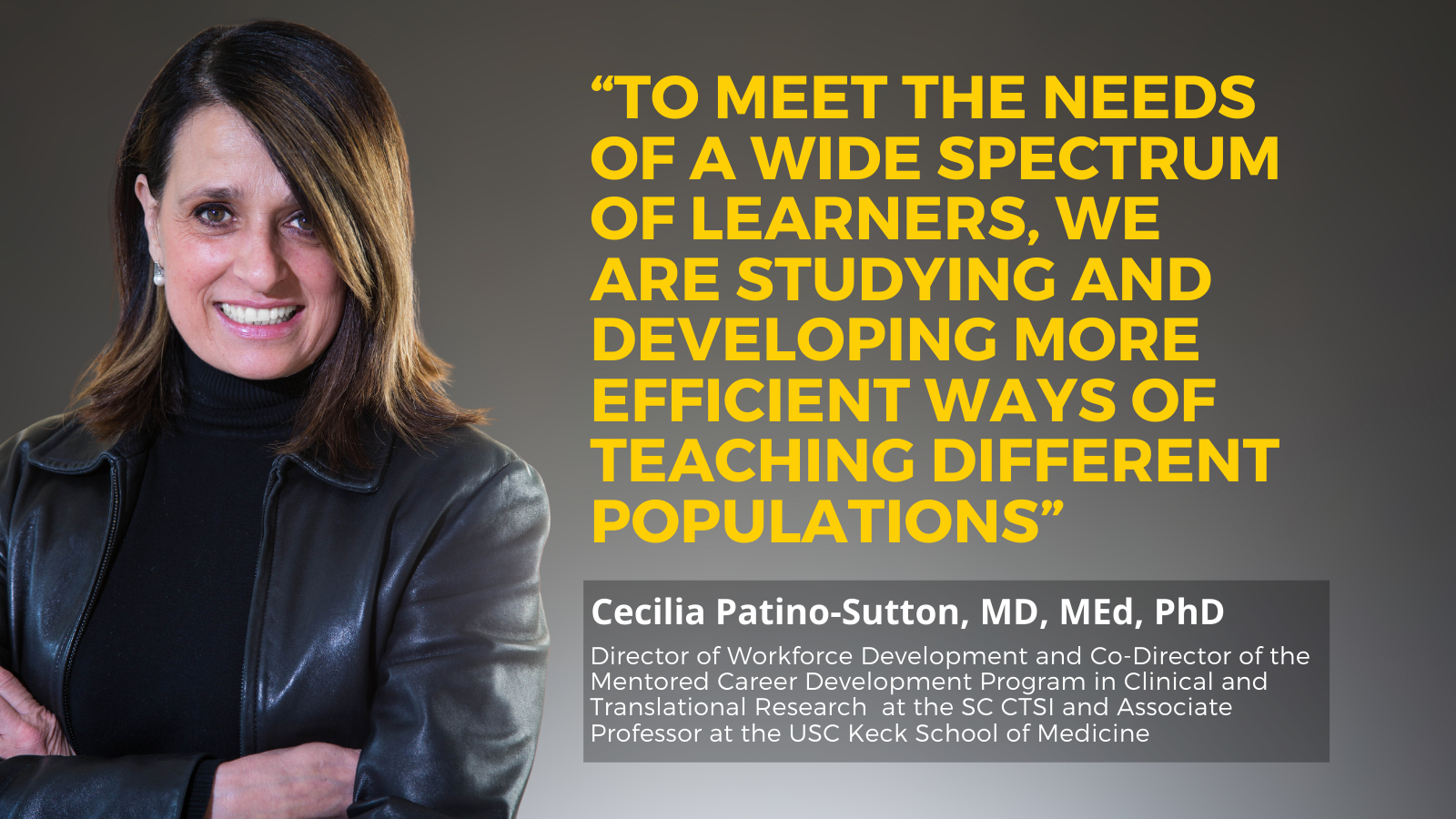SC CTSI Researcher Provides a Framework to Educate the Educators of Clinical and Translational Research: Exploring Best Practices in Instruction

Some educators are already adopting new approaches tailored for different learning groups in the clinical translational science (CTS) workforce, but other instructors might not know where to find or how to use advanced educational tools and methods.
“CTS is a relatively new, diverse and complex field of research and includes many different disciplines and learner groups,” said Cecilia Patino-Sutton, MD, MEd, PhD, Director of Workforce Development and Co-Director of the Mentored Career Development Program in Clinical and Translational Research and Associate Professor at the USC Keck School of Medicine.
“Educational strategies for CTS should thus align and cover the complete spectrum of this exciting field,” she said. “Additionally, educating many different types of learning groups in this workforce will require constant innovation. There are novel educational opportunities and technologies available to teach clinical translational research. We want to offer best practices so educators can use or adapt them in their instruction right now.”
Patino-Sutton is co-editor of the current themed issue of the Journal of Clinical and Translational Science about “Educating the Educator” in Clinical and Translational Research and co-wrote the editorial.
The themed issue’s first category of papers focuses on the fundamentals of educating others. The second category addresses novel educational approaches, tools, or methods available for effective and innovative CTS education. The third addresses best practices in use.
“We provide a big-picture view of CTS and various strategies that are available for educators to modernize instruction and appeal to different learner groups,” said Patino-Sutton.
CTS research draws on observations from the laboratory, clinic and community to create interventions that improve individual and public health. The CTS field addresses a broad spectrum of transitional spaces that were previously understudied. These transitions include translating pre-clinical science discoveries for human diagnostics and treatments, improving diagnostics and treatments for clinical practice, and disseminating or implementing evidence-based practice across populations. Researchers seek to understand barriers to effective translations and how to overcome them.
“Wherever we are on the translational spectrum, we’re trying to identify targets for interventions that will improve the health of humans,” she said.
CTS learner groups include research staff, faculty, graduate students, residents, fellows, and community collaborators. The CTS field includes a broad diversity of scientific perspectives, disciplines, and geographic regions. Learner groups vary in age, career experience and other characteristics.
“Groups of CTS learners could be those who recruit people for a clinical trial, those who analyze the data, those who come up with the research questions, and also individuals from the community,” said Patino-Sutton.
“To meet the needs of a wide spectrum of learners, we are studying and developing more efficient ways of teaching different populations,” she said. “This is about the educator understanding their learner group, and based on who that group is, exploring the many different modalities to teach them.”
Over the past two years, the educational environment has changed dramatically, incorporating remote and hybrid modes, understanding learning needs of different populations and exploring a wider range of educational technologies. CTS educators have been adapting these innovations in their teaching strategies.
The theme issue explores best practices in using gaming, storytelling, or online learning/instructional technology, among other innovations.
“One educational modality would be a very traditional one—you’re in a classroom, using slides to talk about the content, the students are listening, you are talking, and then the class ends. But there can be other ways to better convey the same information for the educational needs of a particular learner group,” she added. “So, in this themed issue we offer educators of clinical and translational research opportunities to use these novel instructional modalities.”



